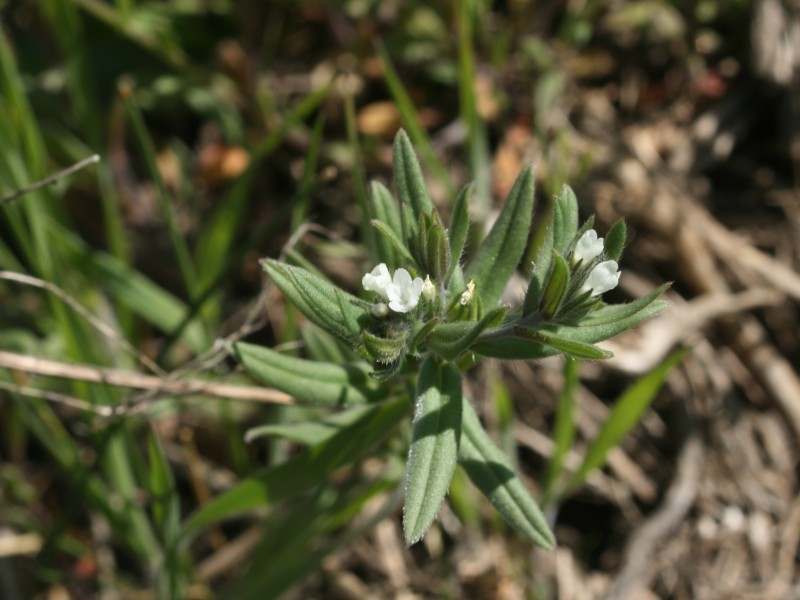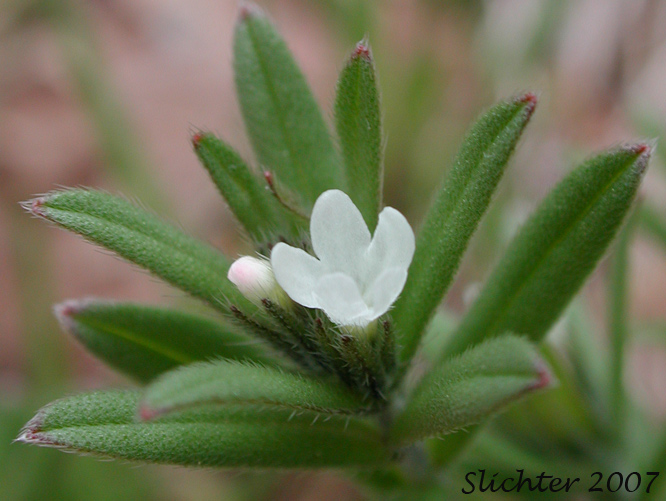
Corn Cromwell
Corn Cromwell (Ironweed, Sheepweed) is a winter annual or biennial that becomes ½–2′ tall, branching very little except at the base. The round stems are more or less hairy. The alternate leaves are up to 1½” long and ¼” across. They are oblanceolate, lanceolate-oblong, or oblong-linear, and sessile at the base. The upper surface of each leaf has a single central vein, but radiating side veins are not visible. The leaves are more or less pubescent, although they occasionally have longer white hairs. Their margins are smooth and ciliate.
The nearly sessile flowers develop from the axils of the leaves in the upper portion of the stems. They are bunched together while in bloom or at the bud stage, but become more separated from each other as the flowering stems continue to elongate. Each flower is about ¼” long, consisting of a tubular white corolla with 5 small lobes and a hairy green calyx with 5 teeth that are linear-lanceolate. These teeth are about as long as the corolla. There are 5 stamens and a pistil that are inserted within the narrow throat of the corolla. The blooming period can occur from mid-spring to mid-summer and lasts about 2 months. Each flower is replaced by 4 nutlets. A nutlet is truncate at the base and tapers to a blunt round tip at the top. It is broadest a little below the middle, and has a greyish brown surface that is rough and wrinkled. The root system consists of a taproot. This plant spreads by reseeding itself.

